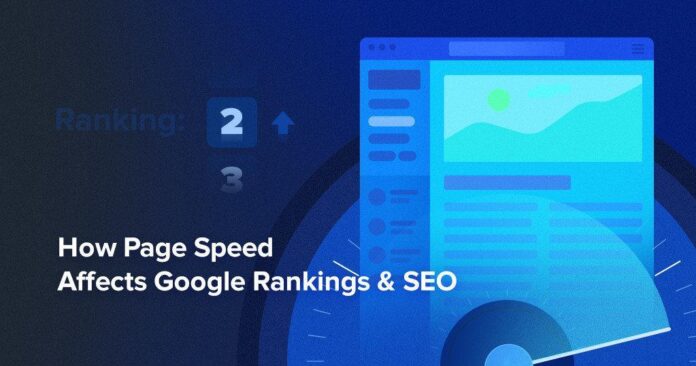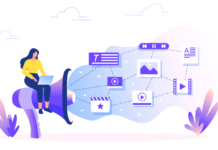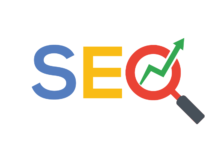A website that loads quickly provides a wonderful user experience. Page speed is a significant element that might affect your SEO. Google aims to showcase the most pertinent and user-friendly web pages when someone searches. Google doesn’t want to emphasize a page with a sluggish website since it makes for a negative user experience.
Page speed, which refers to how quickly information loads on your website, is crucial to the customer experience since it affects factors like bounce rates and time spent on a page. For desktop browsers, the ideal load time is 2 to 3 seconds, while for mobile searches, it’s about 5 seconds.
Faster websites attract more visitors and experience lower site abandonment rates, increasing your chances of generating leads and closing purchases. Conversely, slower websites may cause visitors to leave before loading the page.
Your choice of a web host can significantly affect your site speeds. For instance, a reputable host with high-quality hardware and caching technologies can boost your performance, increasing customer satisfaction; feel free to read the following A2 Hosting reviews to get the point. On the other hand, a low-quality host can negatively affect your performance, SEO, and conversions.
But that’s not all there is. Let’s dive into details; what other factors can negatively affect your website speed, and how can you fix it?
Common Factors That Slow Down Your Website Page Speed
The most frequent elements that affect the speed of your website’s page load are included in the following list. This summarizes some of the most typical problems to watch out for, albeit it is not a complete list.
1: Not Using CDN Service
A network of servers located all over the world makes up a content delivery network (CDN). With a CDN, everyone will encounter your website more quickly since it may be sent to visitors from the nearest place.
Not using a CDN, however, can cause latency if your servers are located far from your target audience.
2: Unoptimised Images
It takes longer for larger photos to load. A tool for picture compression may be used to minimize file size while maintaining image quality. Assure the size is appropriate for the location. Some picture file formats won’t even load correctly in some browsers, while other image file types are inherently bigger.
3: Unnecessary Redirects
It will take much longer to load if the page someone tries to access redirects them to another website. Wherever you can, try to minimize redirects and ensure all links on your official site point directly to the desired page.
4: Excessive HTTP Requests
Each time a person accesses your site, their browser requests to load every file on the page. A site’s load time can be slowed by having plenty of JavaScript, CSS, and picture files. Ask your developers to check the source code of your website for irrational HTTP requests.
5: Too Many Plugins
If your website was created using WordPress or another CMS, several plugins are undoubtedly loaded in the background. Each of them has prerequisites that the website needs to load.
Be careful to remove any plugins that are not essential.
6: Text Graphics
On many websites, fancy-looking text is shown using graphics. This slows down loading times since pictures load more slowly than text. Additionally, since photos can’t include keywords, it is poor for SEO.
7: Code Density
Not all software is made equal. A website will load more slowly if it contains many extraneous codes. Ensure your developers understand the importance of site performance and encourage them to tidy up current code.
8: Third-Party Scripts
Because they are taking material from another website and sending it to your site, third-party scripts, in the end, cause a website to load more slowly. Videos from sites like YouTube and Vimeo live chat functions and other apps are the most often added scripts to websites.
Even if these scripts could be crucial to the layout or content of your website, you should aim to use them as rarely as possible because they can significantly slow down your site.
How to Improve Your Page Load Time?
Everybody dislikes a sluggish website. Google utilizes your website’s speed as a ranking indicator. So, you must optimize your page load speed by heeding the advice below if you want your website to show up in the Google search results:
- Image and video optimization are necessary since they lengthen the time it takes for a webpage to load and use a sizable percentage of the space on the page.
- By enabling compression, reduce the size of your bigger CSS, HTML, and JavaScript files.
- Utilize browser caching so the browser will not have to refresh the complete page whenever a visitor returns to your website.
- Utilize a CDN to have your website’s duplicates kept at numerous, far-off data centers.
- Redirects should be minimized since your visitor must wait longer for the HTTP request-response process to finish.
Bottom Line
Keep in mind that one of the ranking elements in the search results is website speed. So, one of the very first things you must do if you want to thrive on Google is to increase website speed.
As you can see, both Google and consumers place a high value on website speed. You, therefore, must speed up how long it takes for desktop computers and mobile devices to load your pages.
Try to keep an eye on website speed at all times; even if you’ve improved it before, that doesn’t guarantee that it won’t deteriorate with time.









![Anso FG Reviews: UPDATED 2024 [ansofg.com] Anso FG Reviews UPDATED 2024 [ansofg.com]](/wp-content/uploads/2023/12/Anso-FG-Reviews-UPDATED-2024-ansofg.com_-100x70.png)








